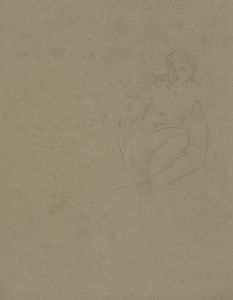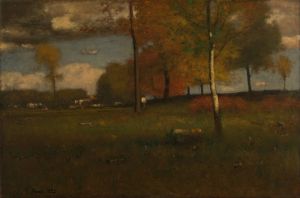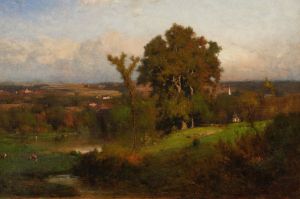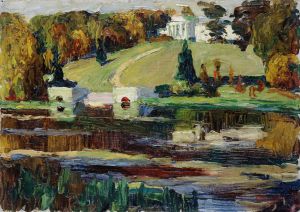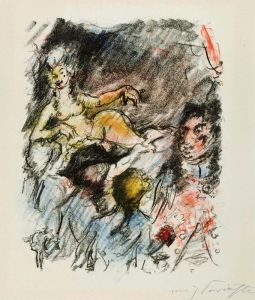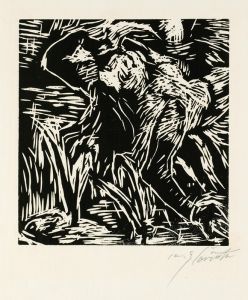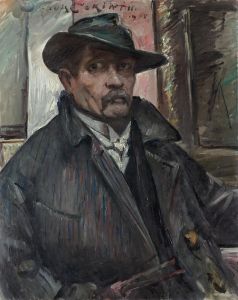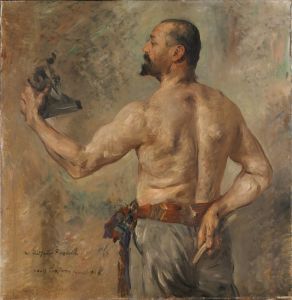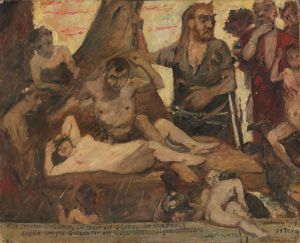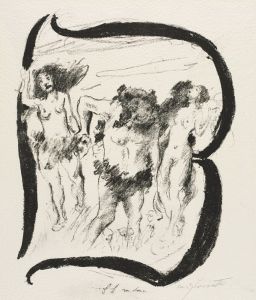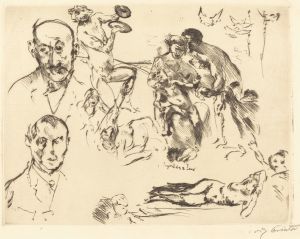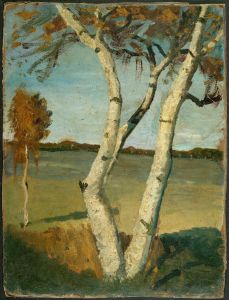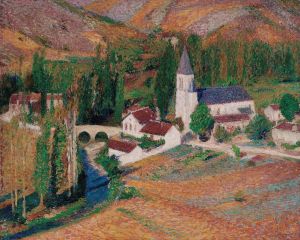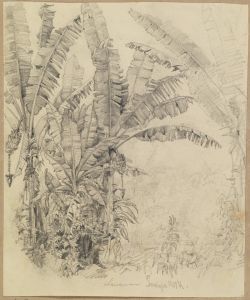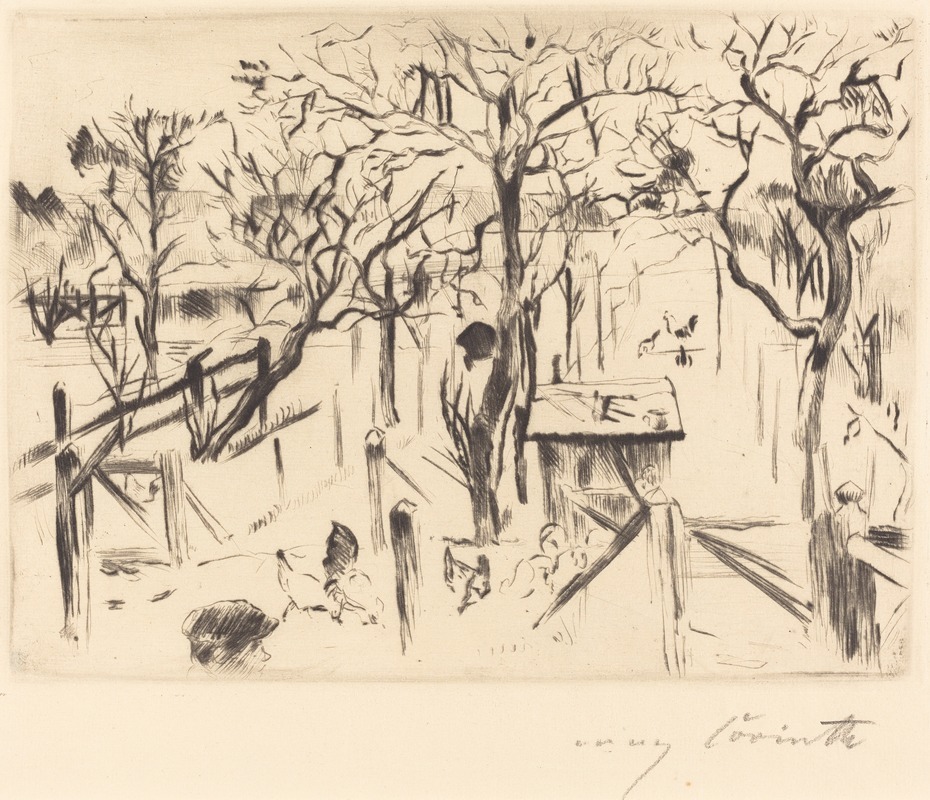
Fruit Garden in Autumn
A hand-painted replica of Lovis Corinth’s masterpiece Fruit Garden in Autumn, meticulously crafted by professional artists to capture the true essence of the original. Each piece is created with museum-quality canvas and rare mineral pigments, carefully painted by experienced artists with delicate brushstrokes and rich, layered colors to perfectly recreate the texture of the original artwork. Unlike machine-printed reproductions, this hand-painted version brings the painting to life, infused with the artist’s emotions and skill in every stroke. Whether for personal collection or home decoration, it instantly elevates the artistic atmosphere of any space.
"Fruit Garden in Autumn" is a painting by the German artist Lovis Corinth, created in 1925. Corinth was a prominent figure in the German Impressionist movement and later became associated with Expressionism. His works are known for their vibrant colors and dynamic brushstrokes, which capture the essence of his subjects with a sense of immediacy and emotional depth.
"Fruit Garden in Autumn" exemplifies Corinth's mature style, characterized by a loose, expressive technique and a rich, autumnal palette. The painting depicts a garden scene filled with the bounty of the harvest season. The composition is dominated by a variety of fruits, likely including apples, pears, and grapes, which are rendered with a lush, almost tactile quality. The foliage and trees in the background are painted with broad, sweeping strokes, creating a sense of movement and vitality.
The painting reflects Corinth's deep appreciation for nature and his ability to convey the beauty of the natural world through his art. The use of color in "Fruit Garden in Autumn" is particularly noteworthy; the warm, earthy tones of the fruits and leaves contrast with the cooler hues of the sky and distant landscape, creating a harmonious yet dynamic visual effect.
Lovis Corinth's career spanned several decades, and he was a prolific artist who produced a wide range of works, including portraits, landscapes, and still lifes. Born in 1858 in Tapiau, East Prussia (now Gvardeysk, Russia), Corinth studied art in Königsberg, Munich, and Paris. He was influenced by various artistic movements throughout his career, including Impressionism and Symbolism, but he ultimately developed a distinctive style that was uniquely his own.
In 1901, Corinth moved to Berlin, where he became a central figure in the city's art scene. He was a member of the Berlin Secession, an association of artists who sought to break away from the conservative art establishment and promote modernist approaches to art. Corinth's work during this period was marked by a bold use of color and a focus on capturing the emotional and psychological depth of his subjects.
In 1911, Corinth suffered a stroke that left him partially paralyzed. Despite this setback, he continued to paint, adapting his technique to accommodate his physical limitations. His later works, including "Fruit Garden in Autumn," are often seen as more expressive and introspective, reflecting his personal struggles and triumphs.
"Fruit Garden in Autumn" is a testament to Corinth's resilience and his enduring passion for art. The painting captures the fleeting beauty of the autumn season, with its vibrant colors and abundant harvest, while also conveying a sense of the passage of time and the cycles of nature. It is a celebration of life and the natural world, rendered with the skill and sensitivity that characterize Corinth's best work.
Today, Lovis Corinth is regarded as one of the leading figures of German art in the late 19th and early 20th centuries. His works are held in major museums and collections around the world, and "Fruit Garden in Autumn" remains a beloved example of his artistic legacy.





